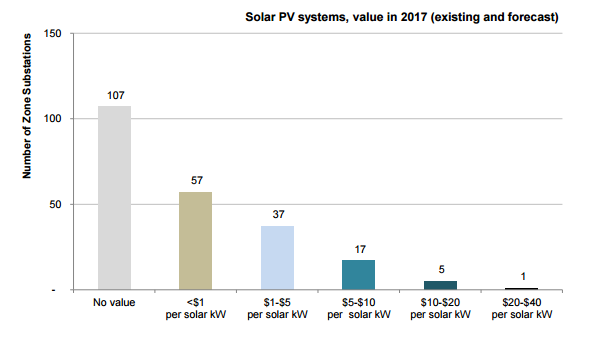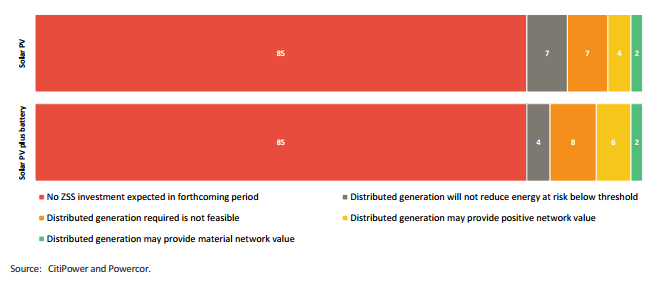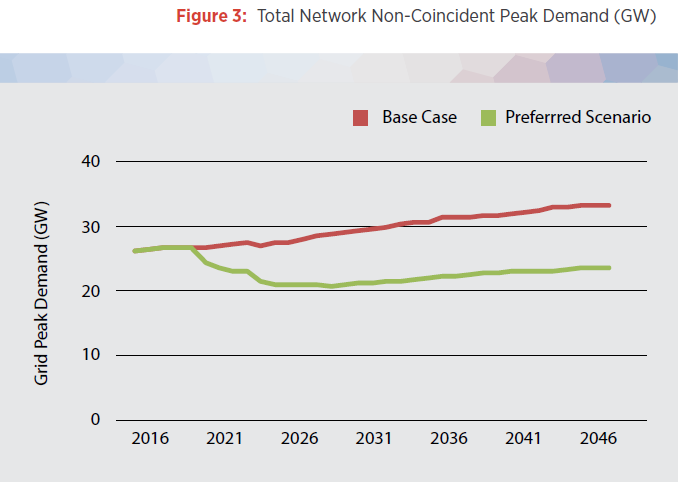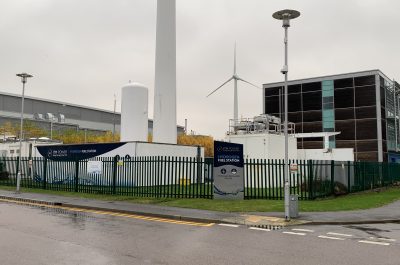Putting a value on the benefits of Solar & Storage
On different sides of the globe, regulators in Australia and the United States are reaching similar conclusions about the best way to reward solar, storage and other distributed resources…
One of the most controversial topics in politics – let alone energy policy – is how much customers with solar panels should be paid for their generation output. Australian Governments have wound back generous subsidies and feed-in tariffs introduced at the dawn of Australia’s solar sector, with the New South Wales Solar Bonus Scheme closing at the end of this year. The Australian Energy Market Commission and Grattan Institute have also pointed to the indirect cross-subsidies provided to solar PV simply due to outdated network tariff structures, with the Grattan Institute estimating an unintentional cross-subsidy of $3.7 billion from other users.
During 2016, the Essential Services Commission of Victoria (ESCV) has been undertaking a significant two part study assessing both the energy value and network value of distributed generation. The very title of its review, ‘The True Value of Distributed Generation’, reflects how contested the issue of incentives for solar and other distributed resources has become. The first stage of the study on the energy value has already seen a Government commitment to a time-varying Feed In Tariff.
This month, the ESC released The Network Value of Distributed Generation, finding that distributed generation does provide value for the network. However, a broad-based feed-in tariff (FiT) is not an appropriate remuneration tool for the value of distributed generation that customers may provide. The key findings in relation to the network value of distributed generation included:
- The value varies widely between locations, across times, and between years;
- The greatest value for networks is when distributed generation efficiently reduces ‘energy at risk’ – given the amount of expected unserved energy due to congestion of a network asset influences the timing of network augmentations.
- Only a few substations will exhibit a material energy at risk and these instances may only occur for a small period (as small as one hour).
- The time when substations will exhibit energy at risk will vary between substations resulting in non-uniform times at which distributed generation will provide network value.
- The distributed generation only provides value if the network has “firm” access to reduce energy at risk when it needs it.
Analysis produced by Jacobs for ESCV concluded that during 2017, solar PV would provide limited benefits to the network in most locations and more substantial benefits in a few locations. This is reflected in the figure below:

Analysis by consultants ENEA for CitiPower and Powercor suggested that the proportion of locations where distributed generation would provide value was lower. It predicted only 2 of the 105 zone substations analysed would receive material benefit from DER in 2017.

As a result of the analysis, the ESCV concluded incentives should be targeted, rather than broad based:
The value of the grid services that distributed generation can provide is too variable – between locations, across times, and between years. [A broad based feed in tariff] could lead to payments to distributed generators who were not providing benefits, while at the same time, not sufficiently rewarding those who were.
Instead, the ESCV is looking for market mechanisms that provide adequate opportunities for small-scale grid service providers, to be remunerated for the grid services they provide. This includes supporting the participation of these providers in a well-functioning market for grid services.
While incentives must be appropriately targeted, recent analysts for the CSIRO and Energy Networks Australia Electricity Network Transformation Roadmap suggests the long-term benefits of enlisting distributed energy resources for network support could be material. The study found if networks buy grid support services from customers in the ‘right place at the right time‘, the long term benefits to 2050 could include:
- replacing$16.2 billion of network investment;
- avoiding $18.6 billion in cross subsidies between energy customers; and
- provide $16.7 billion in economic benefit to the community.

New demonstrations of these partnerships between networks and distributed energy resources are emerging every day. This week, energy networks United Energy and Essential Energy announced participation in a trial involving over 150 customers using smart inverters with solar PV and storage to support network power quality and stability. The trial led by the UTS Institute of Sustainable Futures will also involve storage software maker Reposit Power, solar technology provider SMA Australia, the Australian Photovoltaic Institute, and the NSW and Victorian Governments.
As the ESCV was releasing its report in Australia, regulators and policy makers in the United States were also identifying required changes to incentives for distributed resources. As recent staff paper for the New York “Reforming the Energy Vision” strategy, outlined the case for more precise valuation of services. The staff paper recognises a number of challenges in transitioning away from current incentives. It recommends unbundling the “value stack” and then designing practical, value based methods to signal and compensate for those values. The paper categorises four main elements of distributed generation value:

Just last week, the National Association of Regulatory Utility Commissioners (NARUC) released a comprehensive manual aimed at assisting jurisdictions in developing policies related to DER compensation. The Manual identifies issues and questions that jurisdictions may wish to consider when adopting possible rate design and compensations.
The report highlights the considerations that regulators need to balance when valuing DER and appropriating this value through tariffs.
DER may impose onto the utility new costs, which need to be recovered to ensure the utility’s financial health and to allow the utility to recover necessary investments in the distribution grid to maintain reliability and quality of service. Of course, over the long term, DER may reduce utility costs. Identifying the appropriate principles, goals, and objectives for rate design can assist a regulator in determining an appropriate rate (or compensation methodology) that collects the authorized utility costs or authorized revenue requirement
The New York State Public Service Commission highlights the need for a value driven approach:
Electricity retail pricing experienced by customers must provide efficient value signals, both in the rates paid by customers for utility service, and in compensation earned by customers for value that energy management and distributed generation can provide to the system.(p3-4)
Submissions to the Victorian Essential Services Commission draft report on the True Value of Distributed Generation are due on 12 December, with a final report due to the Government in February 2017.


